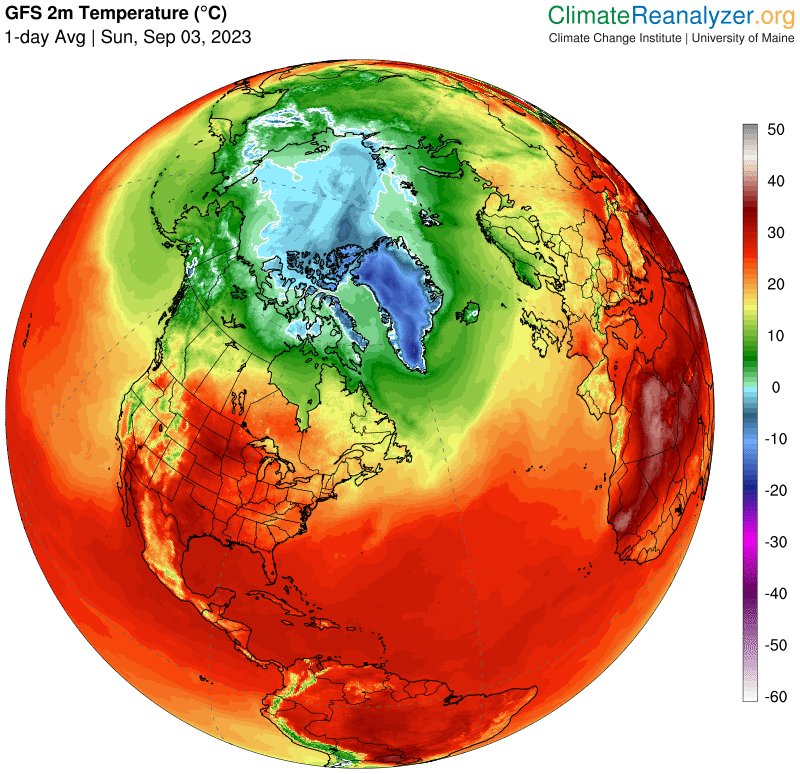Today's Weather Maps
Today's Weather Maps has been updated!
If your browser does not redirect automatically, please go to the new page at
https://climatereanalyzer.org/wx/todays-weather/

If your browser does not redirect automatically, please go to the new page at
https://climatereanalyzer.org/wx/todays-weather/

Climate Reanalyzer provides visualizations of existing publicly-available datasets and models. This website is produced by the Climate Change Institute at the University of Maine. Our institute has a 50-year history of polar exploration, and research contributions to glaciology, climate science, and anthropology. Send questions to reanalyzer@gmail.com.
Climate Reanalyzer content is licensed under a
Creative Commons Attribution 4.0 International License
 .
Figures may be used as-is in publications, newsletters, and websites provided that the ClimateReanalyzer.org
and dataset source labels are visible, or otherwise credited if image is modified.
.
Figures may be used as-is in publications, newsletters, and websites provided that the ClimateReanalyzer.org
and dataset source labels are visible, or otherwise credited if image is modified.
To reference Climate Reanalyzer in a publication, please use the website citation below in addition to source citations for any datasets used:
Climate Reanalyzer (n.d.). [Title of specific page]. Climate Change Institute, University of Maine. Retrieved [Month Day, Year], from https://climatereanalyzer.org/
Disclaimer: Information on this site is provided as-is for educational purposes only. The University of Maine and the Climate Change Institute make no representations or warranties of any kind, express or implied, regarding the accuracy, adequacy, validity, reliability, availability or completeness of any information on this website or data contained within. The University of Maine and Climate Change Institute will not be liable for any errors, omissions, or delays in the information or data on this website or for any losses, injuries, or damages arising from its use. It is the user’s responsibility to verify their own facts. Your use of this website and your reliance on any information or data on or generated from this website is solely at your own risk. This website does not contain nor is it intended to contain any legal advice. Any legal information provided is only for general informational and educational purposes, and is not a substitute for legal advice. Accordingly, before taking any actions based upon such information or data, the University of Maine and Climate Change Institute encourage you to consult with an appropriate legal professional or licensed attorney.